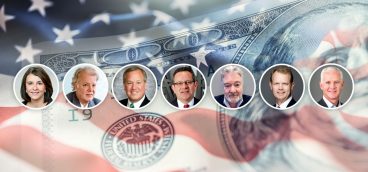Democracy, Populism, and the Tyranny of the Experts, Part IV

Not that long ago—say, when my parents were starting out in married life—building a sound investment portfolio was a piece of cake. You bought some Blue Chip stocks and some Triple A bonds and you were done.
And even having to worry about building a portfolio was a very rare experience. The vast majority of Americans lived from paycheck to paycheck, and when we did have a little money put by we didn’t think of it as a “portfolio,” we thought of it as “savings.” It went into a savings account, not into stocks and bonds.
But what a difference a few decades makes! Today even the least of us has to worry about investing a defined contribution plan or IRA. Many people who consider themselves to be firmly middle class have to manage portfolios worth hundreds of thousands of dollars or more.
The rapid boom that occurred after World War II made many Americans much better off than they had ever been—after all, before the war there was the Great Depression. Then, as the Soviet Union collapsed and global Communism disappeared, the entire world stopped messing around with socialism and turned capitalist. Almost instantly, wealth was created at a rate unseen in the entire history of the human species.
And along with that vast increase in wealth came a vast increase in consumption, which was in turn fed by what we now call globalism. Corporations no longer hired local workers to labor away in local factories to make goods for nearby people. Globalization meant that corporations became multinational in scope, and their appetite for capital became voracious. To feed that appetite, the financial industry invented an astonishing variety of institutions and investment products, which all us newly “wealthy” people invested in, and new capital markets opened up everywhere.
Mutual funds, hedge funds, exchange-traded funds, private equity funds, venture capital funds, mezzanine funds all sprouted almost overnight. Today there are nearly 10,000 mutual funds and almost as many hedge funds. There are more than 2,000 exchange-traded funds. Stocks and bonds seem like quaint relics of a distant past in a world where middle income people own (whether they know it or not) bank loans, asset-backed securities, credit default swaps, gold futures, synthetic CDOs of mezz MBS (that’s collateralized debt obligations of collateralized debt obligations holding medium-credit mortgage-backed securities, but you knew that), and so on. The New York Stock Exchange seems passé as we invest in frontier markets, emerging markets, foreign bonds, non-US small cap companies, etc., etc.
The amount of money invested in just retirement plans of all sorts has now passed $25 trillion in the U.S. alone. Some individual institutions are themselves gigantic. CalPERS, which invests the retirement assets of California state employees, holds $300 billion and pays out benefits of almost $8 billion every year. The Japan national retirement fund invests $1.2 trillion, and the U.S. Social Security trust holds almost $3 trillion. Sovereign wealth funds are also huge investors—the Norwegian Government Pension Fund invests $1 trillion alone, and the China wealth fund is nearly as big.
Except for the tiny group of people who owned actual “portfolios,” our parents and grandparents didn’t need financial advisors to tell them what to do and probably never heard the term. But today you would have to be a blithering idiot to try to invest any serious amount of capital without finding a financial expert to tell you how to do it.
In fact, if you are a trustee of a nonprofit institution, a college or university, a pension plan or a private trust, you are a fiduciary with respect to that money and if you invest it badly you can expect to be surcharged—surcharged for millions of dollars, perhaps. All those institutions hire financial experts, and if they do, then why shouldn’t everyone else? The world of investing is so mindbogglingly complex that no one short of an expert in the field can have any hope of not screwing it all up.
Many decades ago I suddenly found myself heading the investment, operational and philanthropic office for a storied American family. At that point in my young life I’d never traded a stock or bond. I’d recently gone through a divorce and I had the net worth of a cat. But did that stop me from blithely presiding over the management of several billion dollars of private and institutional money? Not at all!
I quickly learned a bit of jargon—covariance, backwardization, macroprudential—and forged ahead. Not only did I not stop to consider that I might not know what I was doing, I developed several very firm views about how capital should—and shouldn’t—be invested, most of which turned out to be wrong. I eventually got the hang of it, but like so many other financial experts, I learned the business on Other People’s Money.
Next week we’ll go back in history and see if we can isolate the exact moment when human society went off the rails on the subject of experts.
Next up: DP&TE, Part V





